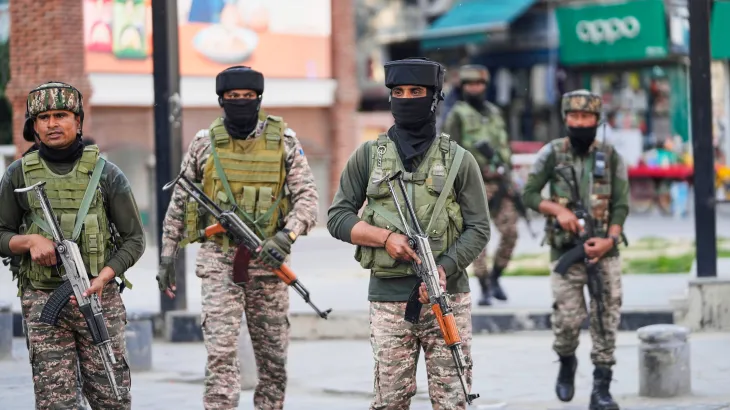On May 10, 2025, U.S. President Donald Trump announced a groundbreaking ceasefire between India and Pakistan, two nuclear-armed neighbors with a history of conflict. The agreement, which followed intense U.S.-mediated talks, halted weeks of escalating violence that had raised global fears of a wider war. While both nations confirmed the ceasefire, questions linger about its durability and the role the U.S. played in brokering it.
A Tense History
India and Pakistan have long been at odds, particularly over Kashmir, a disputed region both countries claim in full but control only in part. The two nations have fought three wars over the territory, and tensions flared again after a deadly attack on tourists in Indian-administered Kashmir in April 2025. India blamed Pakistan for the massacre, which killed 26 people, and launched “Operation Sindoor,” striking targets in Pakistan and Pakistan-administered Kashmir. Pakistan denied involvement and retaliated with its own operation, “Iron Wall,” escalating the conflict with missile and drone strikes.
The back-and-forth attacks, including India’s strikes on Pakistani military bases near Islamabad, brought the region to the brink. Both countries possess nuclear weapons, making the stakes dangerously high. The world watched anxiously as the conflict threatened to spiral out of control.
The Ceasefire Breakthrough
After a night of U.S.-led diplomacy, President Trump announced the ceasefire on Truth Social, calling it a “full and immediate” halt to hostilities. “Congratulations to both Countries on using Common Sense and Great Intelligence,” he wrote. U.S. Secretary of State Marco Rubio and Vice President JD Vance played key roles, engaging with Indian and Pakistani leaders, including Prime Ministers Narendra Modi and Shehbaz Sharif.
The ceasefire took effect at 5 p.m. New Delhi time on May 10. Rubio stated that both nations also agreed to discuss broader issues at a neutral site, though India later clarified no such talks were confirmed. The agreement was a rare moment of de-escalation, but its announcement was overshadowed by reports of blasts in Srinagar, India-administered Kashmir, just hours later. The cause of the explosions remains unclear, raising concerns about the ceasefire’s stability.
Mixed Narratives on U.S. Involvement
The U.S. claimed significant credit for the truce. Rubio and Vance’s 48 hours of phone calls with Indian and Pakistani officials were praised by the U.S. State Department as a “beautiful partnership.” Pakistani Prime Minister Sharif thanked Trump, Vance, and Rubio for their “leadership and proactive role for peace.” A Pakistani source emphasized Rubio’s crucial role in securing the deal.
India, however, downplayed U.S. involvement. Foreign Secretary Vikram Misri said the ceasefire was negotiated “directly” between the two nations, and Indian statements avoided mentioning American mediation. Analysts suggest India, an emerging global power, is wary of appearing reliant on foreign intervention, while Pakistan is more open to international support. These differing narratives highlight the complex dynamics between the rivals.
A Fragile Peace
The ceasefire is a significant step, but challenges remain. The Srinagar blasts underscore the fragility of the truce, and no clear terms for the agreement have been disclosed. Measures like India’s suspension of a water-sharing treaty with Pakistan and mutual visa cancellations remain in place, signaling unresolved tensions. Military leaders from both sides are set to speak again on May 13, which could clarify the path forward.
For now, the ceasefire offers a moment of relief. As analyst Abdullah Khan noted, both nations face domestic pressures—India with its economic ambitions and Pakistan with economic and security challenges—that make continued conflict unsustainable. The truce allows each side to claim a victory: India can say it punished Pakistan, while Pakistan can assert it stood firm against a larger neighbor.
Looking Ahead
The India-Pakistan ceasefire is a testament to the power of diplomacy, even in the face of deep-seated rivalry. While the U.S. role remains debated, the agreement reflects a shared desire to avoid catastrophe. For the people of South Asia, the pause in fighting brings hope, but lasting peace will require sustained effort and trust-building. As the world watches, the coming days will test whether this ceasefire can pave the way for a more stable future.
